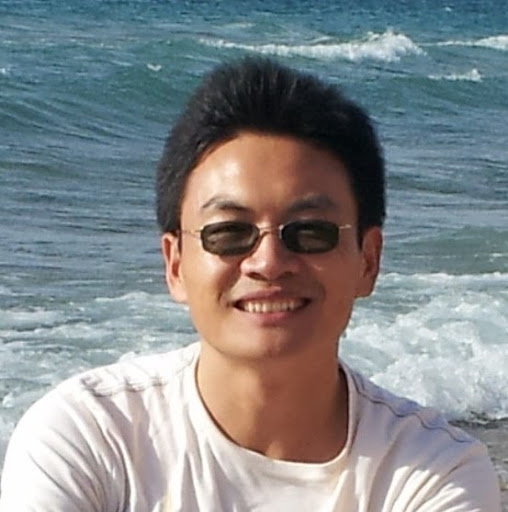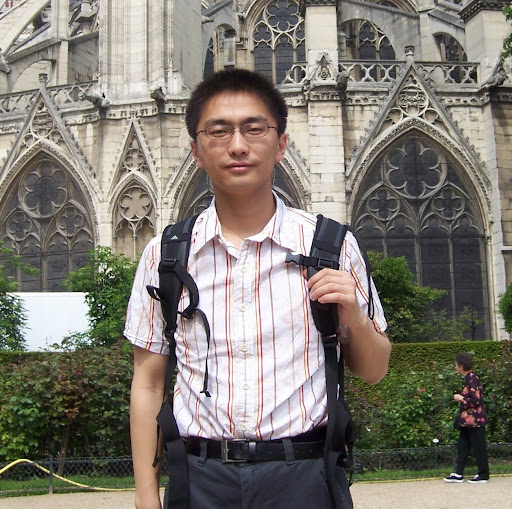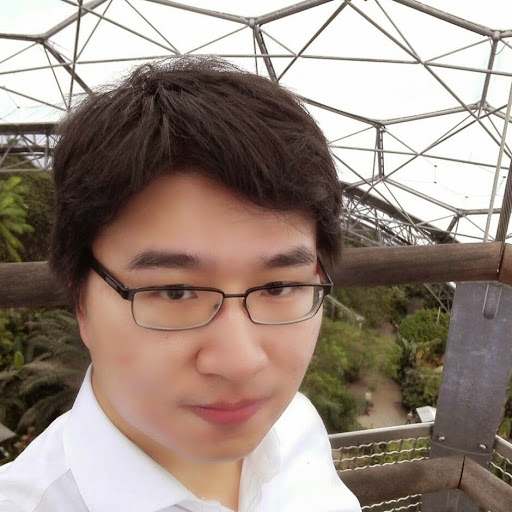Peng Zhang
age ~49
from San Jose, CA
Peng Zhang Phones & Addresses
- 1648 Salamoni Ct, San Jose, CA 95133
- Sunnyvale, CA
- Los Altos, CA
Resumes

Peng Zhang Framingham, MA
view sourceWork:
Olympus NDT
Jul 2012 to 2000
Test Systems Engineer AAC Technologies Holdings, Inc
San Jose, CA
Jul 2011 to Jun 2012
Senior acoustics engineer Medical Acoustics Lab
Boston, MA
Sep 2006 to Jun 2011
Research assistant Institute of Acoustics
Nanjing, CN
Sep 2003 to Jun 2006
Research assistant
Jul 2012 to 2000
Test Systems Engineer AAC Technologies Holdings, Inc
San Jose, CA
Jul 2011 to Jun 2012
Senior acoustics engineer Medical Acoustics Lab
Boston, MA
Sep 2006 to Jun 2011
Research assistant Institute of Acoustics
Nanjing, CN
Sep 2003 to Jun 2006
Research assistant
Education:
Boston University
Boston, MA
2006 to 2011
Ph.D. in Mechanical Engineering with concentration in Acoustics/Ultrasonics Nanjing University
Nanjing, CN
2006
M. S. in Acoustics Nanjing University
Nanjing, CN
2003
B. S. in Acoustics
Boston, MA
2006 to 2011
Ph.D. in Mechanical Engineering with concentration in Acoustics/Ultrasonics Nanjing University
Nanjing, CN
2006
M. S. in Acoustics Nanjing University
Nanjing, CN
2003
B. S. in Acoustics
Skills:
Matlab, LabVIEW, C/C++, Microsoft Project, etc.
Name / Title
Company / Classification
Phones & Addresses
President
PACIFIC ARK, INC
Whol Electrical Equipment
Whol Electrical Equipment
1165 Virginia Ave, Campbell, CA 95008
1078 W Riverside Way, San Jose, CA 95129
(408)2557435
1078 W Riverside Way, San Jose, CA 95129
(408)2557435
M
U.S.A. Gangye Valve Group LLC
Us Patents
-
Three Dimensional Memory Device Containing Dummy Word Lines And P-N Junction At Joint Region And Method Of Making The Same
view source -
US Patent:20230099107, Mar 30, 2023
-
Filed:Sep 27, 2021
-
Appl. No.:17/485949
-
Inventors:- Addison TX, US
Peng ZHANG - San Jose CA, US -
International Classification:H01L 27/11551
H01L 27/11578
H01L 27/11529
H01L 27/11573 -
Abstract:A three-dimensional memory device includes a first alternating stack of first insulating layers and first electrically conductive layers located over a semiconductor material layer, an inter-tier dielectric layer, and a second alternating stack of second insulating layers and second electrically conductive layers located over the inter-tier dielectric layer. A memory opening vertically extends through the second alternating stack, the inter-tier dielectric layer, and the first alternating stack. A memory opening fill structure is located in the memory opening, and includes a first vertical semiconductor channel, a second vertical semiconductor channel, and an inter-tier doped region located between the first and the second semiconductor channel, and providing a first p-n junction with the first vertical semiconductor channel and providing a second p-n junction with the second vertical semiconductor channel.
-
Hole Pre-Charge Scheme Using Gate Induced Drain Leakage Generation
view source -
US Patent:20210408024, Dec 30, 2021
-
Filed:Jun 30, 2020
-
Appl. No.:16/916186
-
Inventors:- Addison TX, US
Yanli Zhang - San Jose CA, US
Peng Zhang - San Jose CA, US -
Assignee:SanDisk Technologies LLC - Addison TX
-
International Classification:H01L 27/11556
G11C 5/02
G11C 5/06
H01L 29/06
H01L 27/11582 -
Abstract:A memory device disclosed herein. The memory device comprises: a memory string including a first select transistor, a memory cell transistor, and a second select transistor connected in series; a bit line connected to one end of the first select transistor; a source line connected to one end of the second select transistor; a first select line connected to a gate of the first select transistor; a word line connected to a gate of the memory cell transistor; a second select line connected to a gate of the second select transistor; and a control circuit configured to perform, before a program operation, a pre-charge operation comprising: applying a voltage to the second select line connected to the gate of the second select transistor to cause gate-induced drain leakage from the second select transistor.
-
Three-Dimensional Memory Device Containing Structures For Enhancing Gate-Induced Drain Leakage Current And Methods Of Forming The Same
view source -
US Patent:20210159169, May 27, 2021
-
Filed:Nov 27, 2019
-
Appl. No.:16/697560
-
Inventors:- ADDISON TX, US
Zhiping ZHANG - Milpitas CA, US
Peng ZHANG - Fremont CA, US
Deepanshu DUTTA - Fremont CA, US -
International Classification:H01L 23/522
H01L 23/528
G11C 5/06
G11C 16/16
H01L 27/11519
H01L 27/11524
H01L 27/11556
H01L 27/11565
H01L 27/1157
H01L 27/11582 -
Abstract:A three-dimensional memory device includes an alternating stack of insulating layers and electrically conductive layers located over a substrate, where the electrically conductive layers comprise word lines located between a source select gate electrode and a drain select gate electrode, a memory opening vertically extending through each layer of the alternating stack to a top surface of the substrate, a memory film and vertical semiconductor channel having a doping of a first conductivity type located in the memory opening, and an active region having a doping of a second conductivity type that is an opposite of the first conductivity type and adjoined to an end portion of the vertical semiconductor channel to provide a p-n junction. The end portion of the vertical semiconductor channel has a first thickness, and a middle portion of the vertical semiconductor channel has a second thickness which is less than the first thickness.
-
Bi-Directional Sensing In A Memory
view source -
US Patent:20210134372, May 6, 2021
-
Filed:Nov 6, 2019
-
Appl. No.:16/676023
-
Inventors:- Addison TX, US
Muhammad Masuduzzaman - San Jose CA, US
Peng Zhang - San Jose CA, US
Dengtao Zhao - San Jose CA, US
Deepanshu Dutta - San Jose CA, US -
Assignee:SanDisk Technologies LLC - Addison TX
-
International Classification:G11C 16/26
G11C 16/10
G11C 16/34
G06F 3/06 -
Abstract:A method reading memory using bi-directional sensing, including programming first memory cells coupled to a first word-line using a normal programming order; programming second memory cells coupled to a second word-line using a normal programming order; reading data from the first memory cells by applying a normal sensing operation to the first word-line; and reading data from the second memory cells by applying a reverse sensing operation to the second word-line. Methods also include receiving an error associated with reading data from the first memory cells; and then reading the data from the first memory cells by applying a reverse sensing operation to the first word-line. Method also include receiving an error associated with reading the data from the second memory cells; and then reading the data from the second memory cells by applying a normal sensing operation to the second word-line.
-
Non-Volatile Memory With Countermeasure For Program Disturb Including Purge During Precharge
view source -
US Patent:20200234778, Jul 23, 2020
-
Filed:Apr 3, 2020
-
Appl. No.:16/840156
-
Inventors:- Addison TX, US
Peng Zhang - San Jose CA, US
Nan Lu - San Jose CA, US
Deepanshu Dutta - Fremont CA, US -
Assignee:SANDISK TECHNOLOGIES LLC - Addison TX
-
International Classification:G11C 16/34
G11C 16/12
G11C 8/08
G11C 11/408
G11C 16/04 -
Abstract:Program disturb is a condition that includes the unintended programming of a memory cell while performing a programming process for other memory cells. Such unintended programming can cause an error in the data being stored. In some cases, program disturb can result from electrons trapped in the channel being accelerated from one side of a selected word line to another side of the selected word line and redirected into the selected word line. To prevent such program disturb, it is proposed to open the channel from one side of a selected word line to the other side of the selected word line after a sensing operation for program verify and prior to a subsequent programming voltage being applied.
-
Non-Volatile Memory With Countermeasure For Program Disturb Including Purge During Precharge
view source -
US Patent:20190378580, Dec 12, 2019
-
Filed:Jun 7, 2018
-
Appl. No.:16/002825
-
Inventors:- Addison TX, US
Peng Zhang - San Jose CA, US
Nan Lu - San Jose CA, US
Deepanshu Dutta - Fremont CA, US -
Assignee:SANDISK TECHNOLOGIES LLC - Addison TX
-
International Classification:G11C 16/34
G11C 16/12
G11C 11/408
G11C 8/08
G11C 16/04 -
Abstract:Program disturb is a condition that includes the unintended programming of a memory cell while performing a programming process for other memory cells. Such unintended programming can cause an error in the data being stored. In some cases, program disturb can result from electrons trapped in the channel being accelerated from one side of a selected word line to another side of the selected word line and redirected into the selected word line. To prevent such program disturb, it is proposed to open the channel from one side of a selected word line to the other side of the selected word line after a sensing operation for program verify and prior to a subsequent programming voltage being applied.
-
Non-Volatile Memory With Countermeasure For Program Disturb Including Spike During Boosting
view source -
US Patent:20190378581, Dec 12, 2019
-
Filed:Jun 7, 2018
-
Appl. No.:16/002836
-
Inventors:- Addison TX, US
Peng Zhang - San Jose CA, US
Nan Lu - San Jose CA, US
Deepanshu Dutta - Fremont CA, US -
Assignee:SANDISK TECHNOLOGIES LLC - Addison TX
-
International Classification:G11C 16/34
G11C 16/10
G11C 16/08
G11C 16/04
H01L 27/11582
H01L 27/1157 -
Abstract:Program disturb is a condition that includes the unintended programming of a memory cell while performing a programming process for other memory cells. Such unintended programming can cause an error in the data being stored. In some cases, program disturb can result from electrons trapped in the channel being accelerated from one side of a selected word line to another side of the selected word line and redirected into the selected word line. To prevent such program disturb, it is proposed to open the channel from one side of a selected word line to the other side of the selected word line after a sensing operation for program verify and prior to a subsequent programming voltage being applied.
-
Three-Dimensional Memory Device Including Partially Surrounding Select Gates And Fringe Field Assisted Programming Thereof
view source -
US Patent:20190214395, Jul 11, 2019
-
Filed:Jan 9, 2018
-
Appl. No.:15/865892
-
Inventors:- Plano TX, US
Peng Zhang - Fremont CA, US
Johann Alsmeier - San Jose CA, US
Yingda Dong - San Jose CA, US -
International Classification:H01L 27/1157
H01L 27/11578
G11C 16/04
G11C 16/10 -
Abstract:A method of operating a three-dimensional memory device includes applying a target string bias voltage to a selected drain select gate electrode which partially surrounds a row of memory stack structures that directly contact a drain select isolation structure, and applying a neighboring string bias voltage that has a greater magnitude than the target string bias voltage to an unselected drain select gate electrode that contacts the drain select level isolation structure.
News

Weaponizing Oxygen to Kill Infections and Disease
view source- An Alternative to AntibioticsInstead of resorting to antibiotics, which no longer work against some bacteria like MRSA, we use photosensitizers, mostly dye molecules, that become excited when illuminated with light, Peng Zhang, Ph.D., says. Then, the photosensitizers convert oxygen into reactive
- Date: Aug 20, 2018
- Category: Headlines
- Source: Google

Weaponizing oxygen to kill infections and disease
view source- "Instead of resorting to antibiotics, which no longer work against some bacteria like MRSA, we use photosensitizers, mostly dye molecules, that become excited when illuminated with light," Peng Zhang, Ph.D., says. "Then, the photosensitizers convert oxygen into reactive oxygen species that attack th
- Date: Aug 19, 2018
- Category: Headlines
- Source: Google

Scientists 'bottle up' sound waves
view source- "Our technique offers a new degree of freedom for controlling the flow of acoustic energy at will," explained Peng Zhang, lead researcher from US Department of Energy (DOE)'s Lawrence Berkeley National Laboratory (Berkeley Lab).
- Date: Aug 05, 2014
- Category: Sci/Tech
- Source: Google

A Clock that Will Last Forever
view source- ngineering Center, is the corresponding author of a paper describing this work in Physical Review Letters (PRL). The paper is titled Space-time crystals of trapped ions. Co-authoring this paper were Tongcang Li, Zhe-Xuan Gong, Zhang-Qi Yin, Haitao Quan, Xiaobo Yin, Peng Zhang and Luming Duan.
- Date: Sep 25, 2012
- Category: Sci/Tech
- Source: Google

A clock that will last forever: Researchers propose a way to build the first ...
view source- and Engineering Center, is the corresponding author of a paper describing this work in Physical Review Letters (PRL). The paper is titled "Space-time crystals of trapped ions." Co-authoring this paper were Tongcang Li, Zhe-Xuan Gong, Zhang-Qi Yin, Haitao Quan, Xiaobo Yin, Peng Zhang and Luming Duan.Peng Zhang, another co-author and member of Zhang's research group, notes that a space-time crystal might also be used to store and transfer quantum information across different rotational states in both space and time. Space-time crystals may also find analogues in other physical systems beyond tra
- Date: Sep 24, 2012
- Category: Sci/Tech
- Source: Google
Classmates

Peng Zhang
view sourceSchools:
Cardinal Newman High School Montreal Kuwait 2000-2004
Community:
Nino Santis, Leo Markauskas, Edwin Budnik, Stephane Brouillette, Shannon Lockhart, Richard Dowkes, Carole Arbour

Cardinal Newman High Scho...
view sourceGraduates:
Peng Zhang (2000-2004),
Michael Smith (1956-1960),
Giuseppe Fiorito (1970-1974),
Albert Piper (1953-1957),
Maria di Sessa (1974-1978)
Michael Smith (1956-1960),
Giuseppe Fiorito (1970-1974),
Albert Piper (1953-1957),
Maria di Sessa (1974-1978)
Youtube
Flickr
Myspace
Googleplus

Peng Zhang

Peng Zhang
Work:
Center for Statistical Genetics, University of Michigan at Ann Arbor - Analyst (2007)
Education:
University of Michigan - Bioinformatics, University of Michigan - Biostatistics, Indiana University - Medical genetics

Peng Zhang
Work:
Huawei - Standard Engineer (2005)
Education:
Bupt

Peng Zhang
Lived:
Mountain View, CA
Work:
Audience - Engineer
Education:
Tulane University

Peng Zhang
Education:
Nupt
Tagline:
Don't Be Evil .

Peng Zhang
Education:
Xi'an Jiaotong University - Software engineering

Peng Zhang
Education:
Imperial College London - Mathematics, University of Bath - Economics
Tagline:
Imperial College, Bath University, Shenzhen

Peng Zhang
Education:
Xi'an jiaotong university

Peng Zhang
view source
Peng Zhang
view source
Peng Zhang
view source
Peng Zhang
view source
Peng Zhang
view source
Zhang Peng
view source
Tian Peng Zhang
view source
Peng Johnson Zhang
view sourceGet Report for Peng Zhang from San Jose, CA, age ~49















